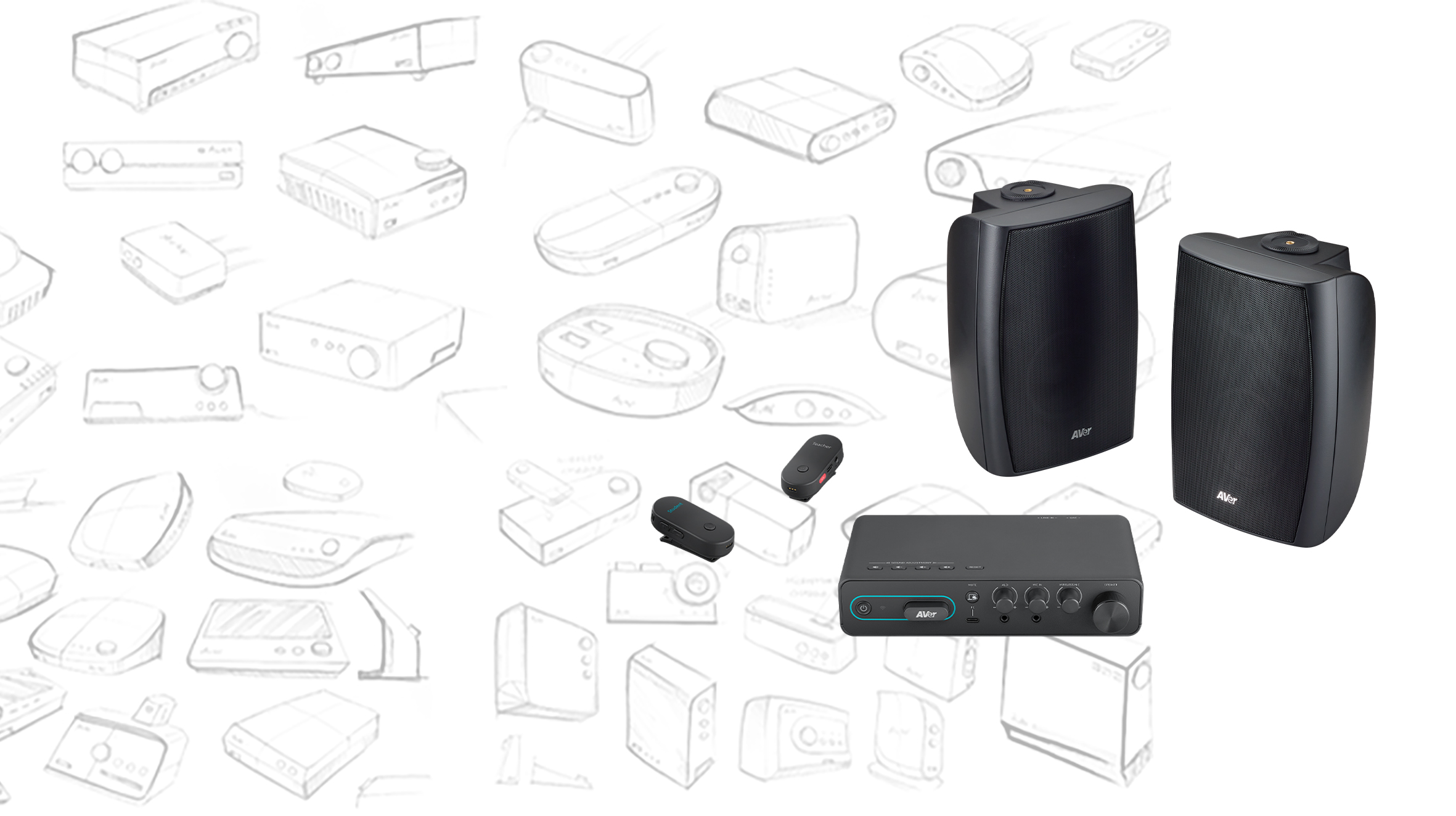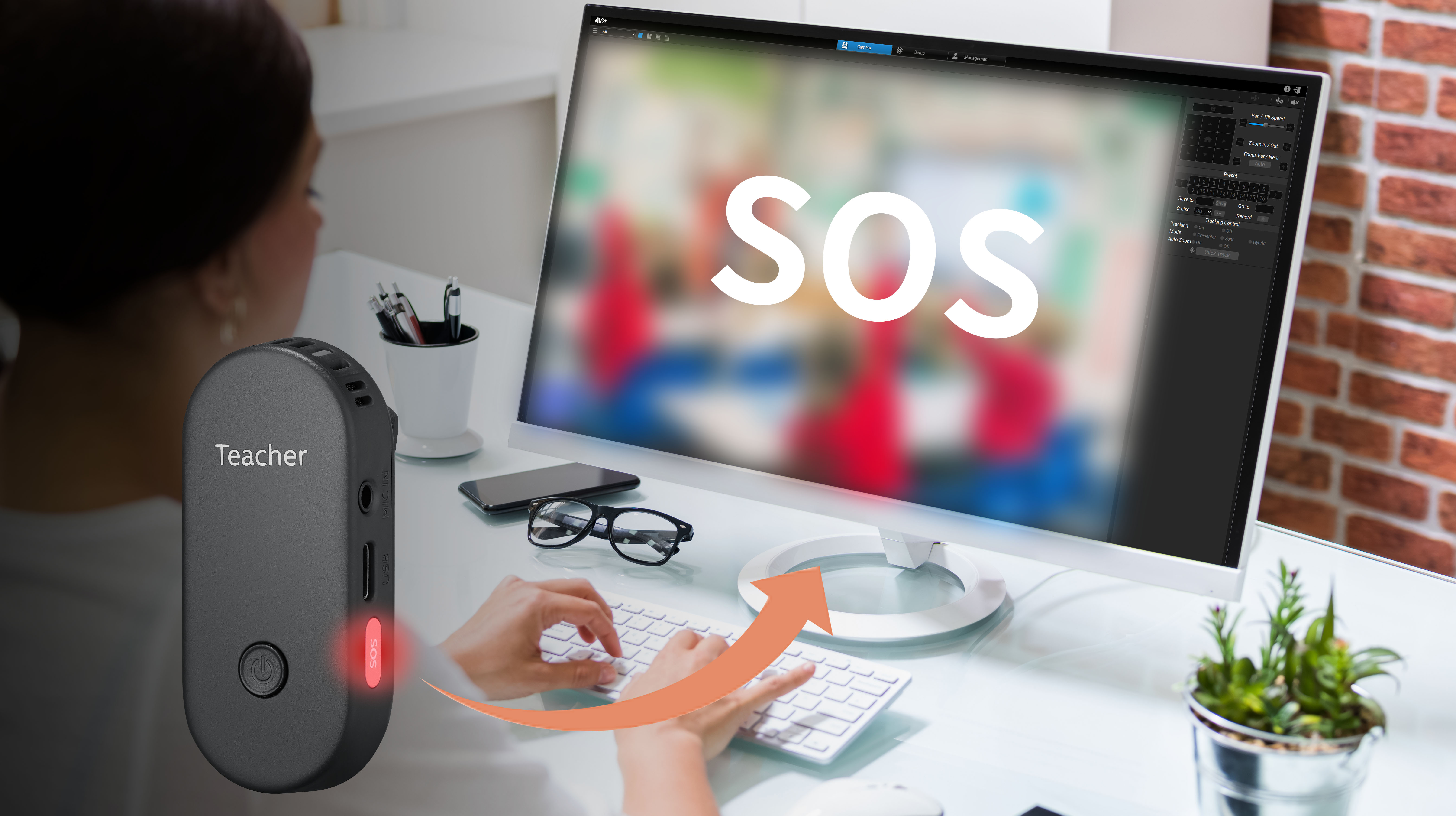The audio-visual industry is buzzing with innovation, particularly in how devices connect and communicate. Smart devices integration streamlines control and automation, while networked audio technology allows for seamless signal distribution. Wireless microphones are freeing presenters from cables, creating a more dynamic and engaging experience. These trends are reshaping the pivotal role that tech tools
play in supporting learning outcomes in the classroom.
In this post, we interviewed AVer product manager, Elaine Chen, to shed light on the SA-A5, AVer’s first integrated streaming audio system for education.
What was the design inspiration for the SA-A5 audio system?
Everyone on our project team is passionate about education. It’s crucial to understand the nuances of an ever-changing classroom landscape.
For instance, there’s a shift from static lectures to interactive learning in open formats, where teachers need to be heard throughout the room while moving freely among students. That informs our design decisions.
Can you describe the development process?
We went back to the drawing board and reimagined classroom audio that would truly make a difference for teachers, students, and school administrators. We spent 3 months refining the idea, shaping the proof of concept, and 3D printing many designs. For the next 9 months, we interviewed various teachers and focused on prototyping, product development, and extensive market-fit field testing in classrooms across Taiwan and the U.S.

Just to set the scene, what’s a typical classroom like?
You’re looking at spaces that are typically 6 by 8 meters, accommodating 20 to 30 students. Depending on their subject expertise, teachers deliver 25 to 30 lessons per week.

What were the pain points of current audio systems that you addressed with the SA-A5?
Our interviews with teachers revealed that audio quality significantly affects classroom communication and teacher well-being. Teachers face vocal fatigue from speaking for 5 to 6 hours daily. Often, they need to project their voices over classroom noise, so it takes a toll if you’re doing it day in and day out.
Sounds a bit like a professional singer performing at a concert.
That’s one way of putting it. You need to look after your voice.
Teachers also struggle with unreliable mics. Moving around the classroom disrupts the signal of their off-the-shelf Bluetooth mics’ limited range (3 to 5 meters).
It’s frustrating for students when they can’t fully hear and understand the teacher’s instructions, so it’s easy for them to lose interest. And that kind of problem is especially magnified for hearing-impaired students. It’s frustrating for teachers, too, if they must keep repeating what they said.
So, signal problems are specifically addressed by the SA-A5, which has a reception range of up to 15 meters.
What impact has the SA-A5 had on educators? Any user stories or testimonials?
One particular teacher comes to mind. This was a very mild-mannered and soft-spoken lady who did not use an audio system in her class. She struggled to keep control of her students, who even playfully tried to persuade her to skip the lesson and join a soccer game in class! This was, of course, really funny to watch.
We then hooked up the SA-A5, and she started using it. The results were night and day. The situation went from the wild west to kind of smoother sailing. The best part? After class, the kids were joking that she had to keep the system or things would be “chaos again tomorrow!”
The audio system became a crowd-control system…
Exactly! It’s amazing to see how she not only projected her voice but also her presence.
What was the thinking behind the design of the microphone?
The microphone prioritizes comfort and ease of use. It’s a necklace-style design you can also clip to clothing, keeping your hands free for teaching.
The AVer mic also doubles as a security device. An SOS button triggers the classroom camera to stream live video to designated personnel in case of serious emergencies.
I should also mention that the SA-A5 box has automatic pairing. Teachers simply walk into a classroom with the mic and begin talking — no time wasted fiddling with connections. Plus, the system is designed to prevent accidental pairing with neighboring classrooms. There’s no risk of students sitting in biology class listening to math from next door!

There are three volume control buttons on the streaming box: Can you elaborate?
Each controls a different audio input. “Wireless Microphones” is for the AVer mic we spoke about earlier. The “Assistive Listening Device (ALD)” port allows teachers to broadcast directly to hearing-impaired students’ transmitters, while the “Microphone” option accommodates teachers who prefer their own wired or wireless mics (both 3.5 mm and USB compatible). The USB line-in port takes things a step further, letting you connect smartboards or other USB devices for a complete audio management system.

What key learnings from the SA-A5 project can inform the development of future classroom audio systems?
It’s been a great learning experience for us, too. The SA-A5 highlights the need for a unified classroom audio platform with a reliable microphone, excellent sound quality, and seamless integration with other school technology.
Looking ahead, there are opportunities for further refinement of the components on the platform. For example, future iterations could focus on advanced audio quality optimization. Something like how the acoustics in home audio systems improve every year. Another opportunity is a deeper integration of the SOS response feature with local emergency services.